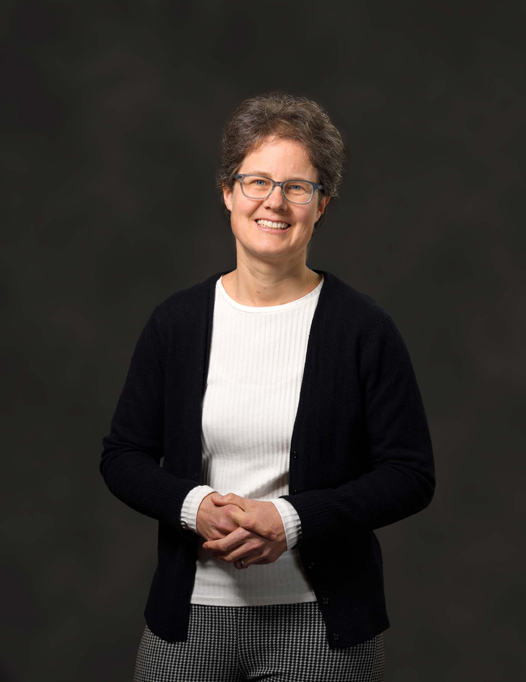We have free sunlight every day, but still we dig in the ground for oil and gas to provide us with energy. That has always intrigued Anja Bieberle-Hütter. As interim head of DIFFER’s solar fuels research theme, she is determined to help solving the paradox.

During her career as a solar fuels researcher, Bieberle has seen the political climate become more responsive to the urgency of climate problems.
This is important, she says, since there is undeniably a political dimension to the adoption of sustainable energy technologies. “If politics would decide that we really have to move away from fossil fuels right now, this would give a boost to some technologies. Fuel cells, for instance, are in principle ready to use, even though they are not as cheap, stable, and efficient as we would like them to be.” Bieberle worked in fuel cells research for over fifteen years, but now she finds her challenge in less mature energy systems, such as photoelectrochemical water splitting. She is “cautiously optimistic” that many of our present political leaders see the need for developing different parallel clean energy solutions.
Exciting time
Bieberle is group leader Electrochemical Materials and Interfaces, but she also likes to look at the bigger picture. The role of interim theme leader is cut out for her, especially during such an exciting time when DIFFER wants to focus more on its role as a national institute in both solar fuels and fusion research.“After working with small-scale setups for several years, we now want to acquire some highly specialized, large-scale equipment that will make us an attractive partner,” Bieberle explains.
Larger community
Three pieces of equipment have been identified so far: a processing tool for complex metal oxide thin films, a high-resolution microscope for the characterization of surfaces during operation, and an X-ray facility that could fill the gap between lab tools and synchrotrons. “Together, these instruments will really serve the larger community that is looking for high-performance materials for clean energy. They will also enable DIFFER researchers to keep doing top science in the long-term, together with our external partners.”
Still work to be done
Seven years ago, when Bieberle was at international conferences, she always had to explain to everyone what DIFFER was. “I had to tell the whole story. That has since changed. I am also frequently asked to join national committees, another sign that we enjoy a growing reputation. But this upward trend has to continue; there is still work to be done. I believe that DIFFER has some unique qualities, particularly our coherence as a closely knitted research community where various groups do totally different science while using similar tools. For example, I am now cooperating in DIFFER with a fusion group, borrowing their control theory to study electrochemical surfaces, which is entirely new. We have a big advantage there that we can exploit. It will help us to continue to grow and become a respected player at the national level.”
Text Mariette Huisjes, photo Bart van Overbeeke/DIFFER. This interview is published in the DIFFER Annual Report 2020.
Go to the News page.